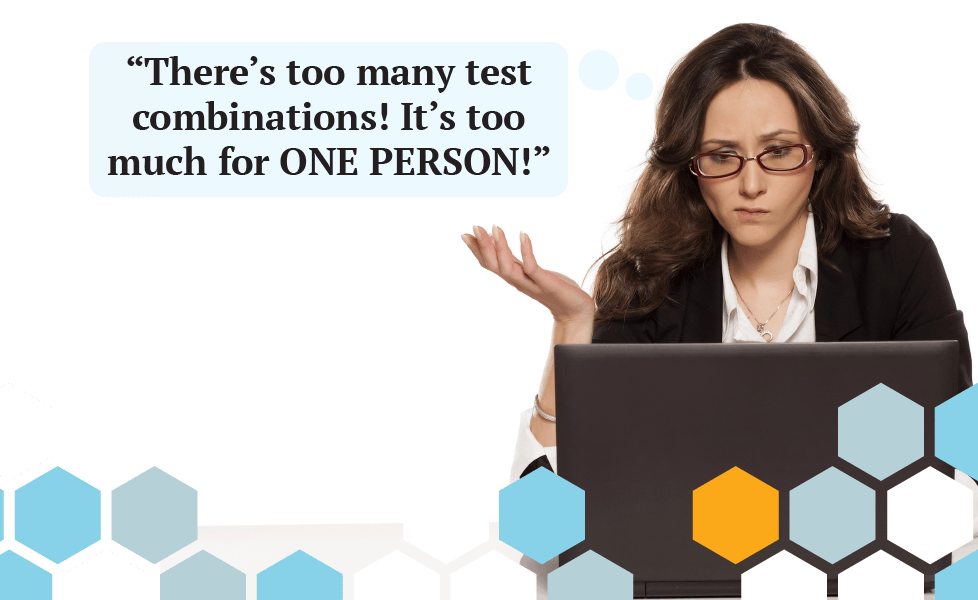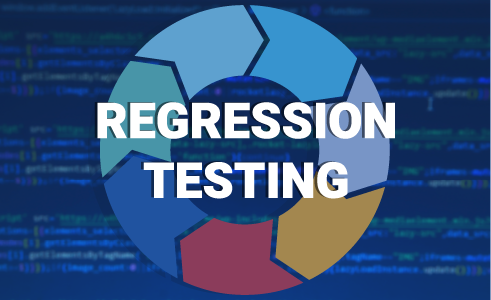What is the biggest challenge in functional test efforts?
So many testing combinations must be tested that no one person can do it all. That's why we need autonomous testing with AI for testing at scale!
TABLE OF CONTENTS
No One Seems Sure
As I mentioned in a previous blog post, I was researching the biggest challenge affecting functional test efforts. Let’s just say that the search results were quite disappointing. I guess in the current internet world, every blog post needs to be a list of some kind, so I found a lot of “Top 5” or “Top 10” or “Top” whatever posts.
I read an article about increasing cancer rates in The New York Times, which claimed in its title that scientists knew what the cause was. I found out that was not the case when I read it. The journalist went through every possible cause in the article and shared expert opinions. At the end of the article, they do not know the cause of the increase in incidents. That is precisely how most of these testing blog posts read: There is a long list of causes, but we are unsure which is the biggest challenge or core issue.
So, What is the Biggest Challenge?
To be fair, one of the blogs puts causes in order. According to this post, the biggest challenge is “Incomplete requirements.” Someone did not read the Agile Manifesto. Requirements are always incomplete. In a LinkedIn article, the number one issue is “Planning and Scope.” It states:
“One of the first challenges of functional testing is defining the scope and planning the test cases. The scope of functional testing should cover all the functional requirements and user stories of the software, but it should also be realistic and feasible within the given time and resources. Planning the test cases involves identifying the test scenarios, test data, test steps, expected results, and test criteria. Testers need to ensure that the test cases are comprehensive, clear, consistent, and traceable to the requirements. They also need to prioritize the test cases based on the risk and importance of the features.”
We can get a hint of the real issue in this answer. In this paragraph, work is abundant. Here is everything you need to do:
- Tests should cover all functional requirements and user stories of the software
- Testing should be realistic and feasible within the given time and resources
- Identify the test scenarios, test data, test steps, expected results, and test criteria
- Test cases are comprehensive, clear, consistent, and traceable to the requirements
- Prioritize the test cases based on the risk and importance of the features
The Testing Process
From our perspective, this list only covers the first two steps in the testing process: discovery and design. The following diagram illustrates what we mean by the testing process:
The first step is discovery, which means understanding what the application does or needs to do. The second step is to design the test cases, which means coming up with test data, among other tasks. Testing also includes execution (third step) and evaluation by reviewing the findings (fourth step).

The Biggest Challenge
The testing challenge is not that requirements are incomplete; they are always incomplete. The challenge is not that you need to perform discovery and design. Those are necessary steps. You need to prioritize tests. To quote one of the articles: “Most software testing companies state that it’s impossible to test a product thoroughly.”
Why do you need to prioritize tests? The fundamental challenge regarding testing is the vast number of combinations required to test a product exhaustively. The complexity of any modern product makes it impossible to test most combinations without the level of considerable investment only the largest technology companies can afford. We have implemented many practices and processes to deal with this foundational problem. We developed testing techniques that allow you to focus on the areas most likely to contain defects (i.e., boundary value analysis). We used many different tools to speed up and organize what we do. Everything we have done is to speed up and narrowly focus our tests.
We can only test some of the combinations, so we go faster and narrow the scope to the highest-risk areas. The problem is that in the last few years, the difference in quality standards between the largest organizations, which can afford to do more testing, has left everybody else behind.
The largest organizations can spend more and, as such, move faster. They can also hire the most skilled testers, giving them an edge when designing tests. They are also aware that the issue of the number of combinations is still present, and it is the real challenge. They invested a lot of resources to deal with that issue and pushed the limits further. Economists like to talk about income inequality. In software testing, we have a resource inequality issue. In particular, the skills gap is significant. Most testers need to learn most software testing techniques.
Is there something that can help narrow that inequality gap?
Yes, the emerging autonomous software testing solutions like the one Testaify is building provide a path forward for all organizations. Testaify’s product can execute the testing process without human intervention and minimum setup. Our AI worker bees can discover an application. Thanks to the power of AI and cloud computing, they can design, execute, and report findings. All of that is in a matter of minutes or hours, depending on the size of your application. Plus, they can get you closer to the dream of thoroughly testing your product. Wouldn’t that be nice? Come and join us.
About the Author
 Testaify founder and COO Rafael E. Santos is a Stevie Award winner whose decades-long career includes strategic technology and product leadership roles. Rafael's goal for Testaify is to deliver comprehensive testing through Testaify's AI-first platform, which will change testing forever. Before Testaify, Rafael held executive positions at organizations like Ultimate Software and Trimble eBuilder.
Testaify founder and COO Rafael E. Santos is a Stevie Award winner whose decades-long career includes strategic technology and product leadership roles. Rafael's goal for Testaify is to deliver comprehensive testing through Testaify's AI-first platform, which will change testing forever. Before Testaify, Rafael held executive positions at organizations like Ultimate Software and Trimble eBuilder.
Take the Next Step
Testaify is in managed roll-out. Request more information to see when you can bring Testaify into your testing process.




